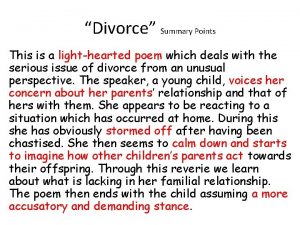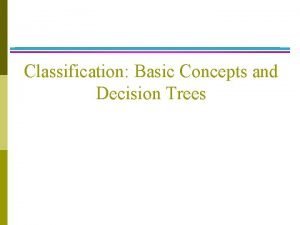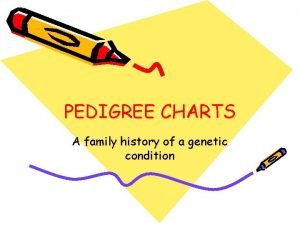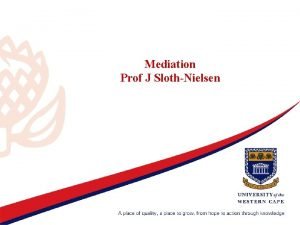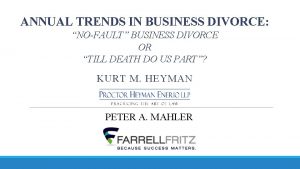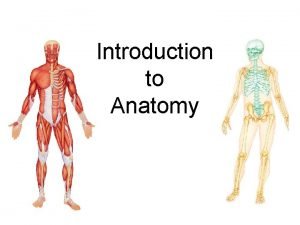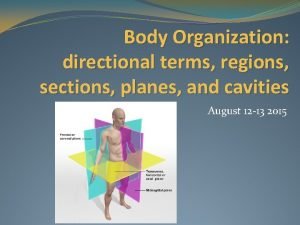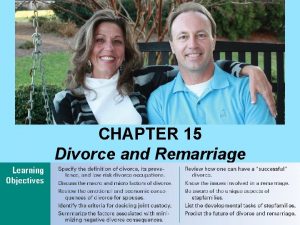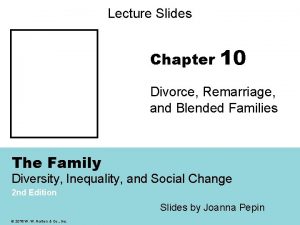Chapter 14 Divorce and Remarriage Chapter Sections 14














































- Slides: 46

Chapter 14 Divorce and Remarriage

Chapter Sections • • • 14 -1 Macro Factors Contributing to Divorce 14 -2 Micro Factors Contributing to Divorce 14 -3 Ending an Unsatisfactory Relationship 14 -4 Gender Differences in Filing for Divorce 14 -5 Consequences for Spouses Who Divorce 14 -6 Effects of Divorce on Children 14 -7 Prerequisites for Having a “Successful” Divorce 14 -8 Divorce Prevention 14 -9 Remarriage 14 -10 Stepfamilies 14 -11 Strengths of Stepfamilies 14 -12 Developmental Tasks for Stepfamilies

Macro Factors Contributing to Divorce • Divorce: the termination of a valid marriage contract • Divorce occurs more frequently today than in the earlier days of the U. S. due to various structural and cultural factors.

Macro Factors • Changing family functions and structure • Liberal divorce laws – No-fault divorce: a divorce in which neither party is identified as the guilty party or the cause of the divorce • Prenuptial agreements • Fewer moral and religious sanctions

Macro Factors • • More divorce models Mobility and anonymity Social class, ethnicity, and culture Educated white Americans are the least likely to divorce

Micro Factors Contributing to Divorce • Micro factors are individual factors that are predictive of divorce. • More likely to be seen as the cause of the divorce

Micro Factors • Falling out of love • Not spending enough time together • Decreasing positive behaviors: compliments, physical affection • Having an affair • Poor conflict resolution skills • Changing values

Micro Factors • Satiation: habituation, the state in which a stimulus loses its value with repeated exposure • Believing life will be better if divorced

Micro Factors—Application Which examples are micro factors? Example More religions accepting divorce. Working different shifts Divorce being relatively less expensive than in the past. Experiencing bankruptcy Having no children Micro or Macro?

Ending an Unsatisfactory Relationship Couples should consider it carefully before breaking up. • Consider chances/hope for the relationship. • Acknowledge and accept that it will be painful. • Select medium (face-to-face, email, text, etc. ). • Blame yourself for the end.

Ending Relationship • Cut off the relationship completely. • Learn from the terminated relationship. • Allow time to grieve.

Ending Relationship • Psychological functioning and happiness of spouses going through a divorce improve after the divorce. • Data are mixed on whether remaining unhappily married or getting divorced and remarried has a more positive outcome for the spouses.

Gender Differences in Filing for Divorce • Women are the first to seek help when there is trouble in the relationship. • Women are likely to feel a renewed sense of self-identity. • Men are concerned about separation from their children.

Consequences for Spouses Who Divorce • The spouse who did not instigate the divorce is more vulnerable to depression. • Women fare better emotionally after a divorce. • Men are likely to date and remarry sooner. • Relationships with extended family change. • Spouses recover sooner if they find new interests.

Consequences • Both women and men experience a drop in income. • Women tend to suffer more financially. • Over half of custodial mothers are awarded child support but most find the amount inadequate.

Consequences • Divorced mothers serve as gatekeepers for the relationship children have with the father. • A father’s relationship with a daughter is usually more damaged than his relationship with a son. • Shared parenting dysfunction: refers to the set of behaviors on the part of each parent that are focused on hurting the other spouse

Consequences • Parental alienation syndrome: a disturbance in which children are obsessively preoccupied with deprecation or criticism of a parent • Parental alienation: an alliance between a parent and a child that isolates the other parent

Effects of Divorce on Children • Benefits of divorce for children – Better than living in high-conflict home – Learn resilience – Receive more attention • Negative outcomes of divorce for children – Less marital satisfaction – Poorer communication skills – Poorer parent-child relationships

Effects on Children • The primary factor that determines the effect of divorce on children is the degree to which the divorcing parents are civil or adversarial. • Legal and physical custody arrangements are also important.

Effects on Children • Legal custody: decisional authority over major issues involving the child • Physical custody: visitation, distribution of parenting time following divorce • Judges in all states are bound by the “best interests of the child. ”

Effects on Children Factors related to fewer negative consequences for children • Healthy parental psychological functioning • Cooperative relationships between parents • Parents’ attention to children – Allowing them to grieve • Encouragement to see noncustodial parent

Effects on Children Factors related to fewer negative consequences for children • Attention from the noncustodial parent • Assertion of parental authority • Regular and consistent child support payments • Stability

Effects on Children Factors related to fewer negative consequences for children • Not shifting attention to children in a new marriage • Considering the age of the children • Divorce education for children

Prerequisites for Having a Successful Divorce • Mediate rather than litigate the divorce. – Divorce mediation: process in which divorcing parties make agreements with a third party about custody, visitation, child support, and property. • • • Coparent with your ex-spouse. Take some responsibility for the divorce. Learn from the divorce. Create positive thoughts. Avoid alcohol and other drugs. Relax and exercise.

Successful Divorce • Let go of anger and have fun. • Continue interpersonal connections. • Allow time to heal.

Successful Divorce Psychological stages of divorce • Denial • Depression • Anger or ambivalence • New lifestyle and identity • Acceptance and integration

Divorce Prevention • Divorcism: the belief that divorce is a disaster • Covenant marriage: type of marriage that permits divorce only under specific conditions – Available in Arizona, Arkansas, and Louisiana – Couples agree to divorce only for serious reasons, to see a marriage counselor, and not to divorce until after a two-year waiting period

Remarriage • 2/3 of divorced females and ¾ of divorced males remarry. • 90% of remarriages are of people who are divorced rather than widowed. • Homogamy: tendency to select someone with similar characteristics to marry – Never-married, divorced, widowed

Remarriage • Older divorced women are less likely than younger women to remarry. • Mating gradient: men marry younger women • Fewer available men • Economically independent • Value freedom

Remarriage Challenges for remarriage • Boundary maintenance: separating from previous relationship and establishing a new one – Negative commitment: describes individuals who remain emotionally invested in their previous relationship • Emotional remarriage: being able to love and trust again

Remarriage Challenges for remarriage • Psychic remarriage: seeing themselves as “paired” again • Community remarriage: renegotiating bonds of friendship • Parental remarriage: custody arrangements and living with spouse’s children • Economic and legal remarriage: legal obligations such as child or spousal support

Remarriage • About 10% of remarriages involve widows or widowers • December marriages: a new marriage in which both spouses are elderly • Primary motivation is need for companionship • The most successful remarriages happen when the spouse of the deceased partner talks openly about the part relationship and reassures the current partner of his or her love.

Remarriage • Stages of Involvement with a New Partner – Deciding on the level of commitment – Introducing one’s children – Allowing time for the children to adjust • Remarriages are more likely than first marriages to end in divorce in the early years of marriage. • Remarried individuals are less likely to divorce after 15 years of marriage.

Stepfamilies • Blended family: a family in which new spouses have children from previous relationships • Binuclear family: a family that spans two households • Stepfamily: a family in which partners bring children from previous relationships into the new home

Stepfamilies Unique aspects of stepfamilies: • Children are biologically related to only one parent. • Stepfamily members have experienced loss. • Stepfamily members are connected to others outside their family unit. • Children may have two homes. • Stepfamilies have reduced disposable income.

Stepfamilies Unique aspects of stepfamilies • Step families are stigmatized by stepism: the assumption that stepfamilies are inferior. • Married couples begin their marriage with children in the home. • The law usually recognizes children of the first family.

Stepfamilies Theories offer different views of stepfamilies. • Structural-functionalists value integration and stability. The structure of the stepfamily can be a threat to family integration. • Conflict theorists view conflict as normal, natural, and inevitable. Conflict in a stepfamily leads to equality and individual autonomy. • Symbolic interactionists emphasize the meanings and interpretations the stepfamily develops.

Stepfamilies • A step family goes through a number of stages as it overcomes various obstacles. • Stepfamilies who survive resolve issues and employ strategies for change.

Strengths of Stepfamilies • Exposure to a variety of behavior patterns • Happier parents • New relationships with stepsiblings • More objective stepparents

Developmental Tasks for Stepfamilies • Developmental task: a skill that allows a family to grow as a cohesive unit • Acknowledge losses and changes. • Nurture the new marriage relationship. • Integrate the stepfather into the child’s life. • Allow time for relationships to develop. • Have realistic expectations. • Establish your own family rituals. • Decide about money.

Developmental Tasks • Accept your stepchildren. • Give parental authority to your spouse/coparent. • Support the children’s relationship with their absent parent and grandparents.

Chapter Summary • Macro factors contributing to divorce include the social context and culture. • A variety of micro factors are associated with some individuals divorcing. • One should carefully consider ending a relationship. • Women usually do better emotionally after a divorce.

Chapter Summary • Couples usually suffer financially from a divorce. • Fathers are affected by separation from their children. • Parental alienation can result. • Divorce has both positive and negative consequences for children. • The quality of the relationship is the most important factor affecting the children.

Chapter Summary • Remarriages are more likely to end in divorce than first marriages in the early years of marriage. • Remarriages have a unique set of challenges. • Stepfamilies have a unique set of challenges. • Successful adjustment to living in a stepfamily has positive effects on the child.

Chapter Review 1. What are the macro and micro factors that contribute to divorce? 2. What are the gender differences in divorce? 3. What are the consequences of divorce for the spouses? 4. How are children affected by a divorce? 5. How can one achieve a successful divorce?

Chapter Review 6. Describe the unique challenges of remarriage. 7. What are the challenges for stepfamilies? 8. What can we do to achieve a successful stepfamily?
 Psychic remarriage
Psychic remarriage Marriage and divorce presentation
Marriage and divorce presentation Divorce between ownership and control tutor2u
Divorce between ownership and control tutor2u Divorce of ownership and control
Divorce of ownership and control Block organization cause and effect essay
Block organization cause and effect essay Ali
Ali Law on adultery and divorce
Law on adultery and divorce Chapter 9 conic sections and analytic geometry
Chapter 9 conic sections and analytic geometry Chapter 7 conic sections and parametric equations
Chapter 7 conic sections and parametric equations Chapter 9 conic sections and analytic geometry
Chapter 9 conic sections and analytic geometry Malachi 2 13-16
Malachi 2 13-16 Surah talaq ayat 12 tafseer
Surah talaq ayat 12 tafseer How pin-up hits depot lease meaning
How pin-up hits depot lease meaning Functionalist view on divorce
Functionalist view on divorce Divorce jackie kay
Divorce jackie kay Divorce poem
Divorce poem Objectives of divorce
Objectives of divorce Objectives of divorce
Objectives of divorce Gini
Gini Divorce busters
Divorce busters Efile texas login
Efile texas login Arielle dombasle lesbienne
Arielle dombasle lesbienne Divorce harmony
Divorce harmony Dawn peek yearn hose
Dawn peek yearn hose Household production model
Household production model Henry viii divorce catherine of aragon
Henry viii divorce catherine of aragon Camille grammer custody
Camille grammer custody Conclusion of divorce
Conclusion of divorce Divorce process in india
Divorce process in india Reasons for divorce
Reasons for divorce Arabic numerals pedigree
Arabic numerals pedigree Mediation in certain divorce matters act
Mediation in certain divorce matters act Matt granite divorce
Matt granite divorce Nofault divorce
Nofault divorce How many sections are in the chapter handbook for tx hosa?
How many sections are in the chapter handbook for tx hosa? Cutaways and cross sections definition
Cutaways and cross sections definition Visceral serosa
Visceral serosa Proksimal nedir
Proksimal nedir 11-1 space figures and cross sections
11-1 space figures and cross sections Health and safety at work act 1974 section 3
Health and safety at work act 1974 section 3 What is graduated commission
What is graduated commission Milady chapter 16 haircutting review questions
Milady chapter 16 haircutting review questions Volumes with cross sections: squares and rectangles
Volumes with cross sections: squares and rectangles Directional terms planes and sections
Directional terms planes and sections Body planes and sections
Body planes and sections Geometric solids with circular cross sections
Geometric solids with circular cross sections Declaration of independence sections
Declaration of independence sections















